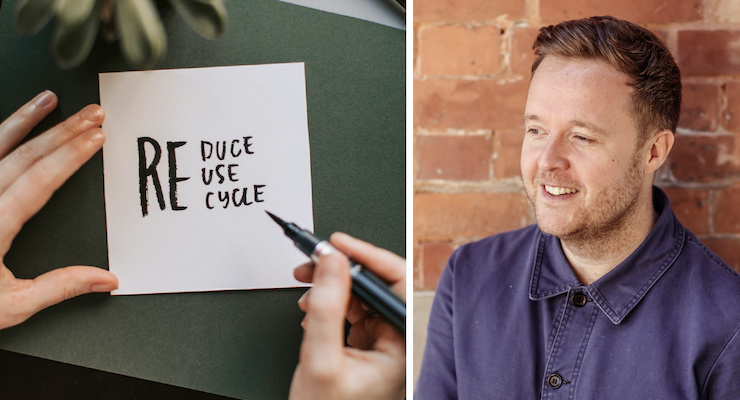Ollie Moore, Strategy Director of creative agency Path06.14.21
For packaging designers, cardboard has been the ‘sustainable’ material of choice for some time now. It’s relatively easy to recycle and, thanks to digital printing, can still be used to convey impactful brand messages.
Yet, cardboard is not an evergreen, always readily-available resource. In fact, we’re currently in the grip of a cardboard shortage, provoked by copious amounts of home-delivery during the pandemic.
To beauty packaging designers, this might ring alarm bells. Nevertheless, the shortage should actually serve as a reminder to them of the need to find more sustainable, consumer-friendly systems to package goods, rather than blindly following the direction of other industries.
Contrary to popular belief, every sheet of cardboard uses at least 30% virgin material. That means using a lot of trees at a time when water is already in scant supply and greenhouse emissions are out of control.
Plastic Can Be Used In A Sustainable Way
Beauty brands tend to deal with a lot of liquid products, so plastic remains a much better packaging choice for them from a functionality standpoint. And there’s actually no reason why they can’t keep using plastic in a sustainable way. They just need to ensure they’re using plastics that we know for a fact are easy to recycle in most circumstances.Take high density polyethylene (HDPE), for example – more commonly known as the plastic we use for milk bottles. As one of the easiest polymers to recycle, it’s a brilliant alternative to cardboard. Yes, it might seem “ugly” at first glance, but that’s where design experts come in. Necessity breeds invention after all, and the right design partner will be able to find an appropriate aesthetic in the required material.
It’s a back-to-basics approach that works, and encouragingly, it looks like some big retailers are taking this on board. The WRAP (Waste & Resources Action Program) report helpfully recommends materials in line with established recycling infrastructure. Tesco has shared WRAP’s advice with all its own brands and has promised to eventually prohibit the sale of any other brands that don’t follow their material design advice.
We Must Evoke Desire From Consumers
Making it easy for people to return, reuse or recycle packaging is a great start. But we’ll only be able to create a truly sustainable supply if packaging continues to serve the need it’s been created for.That means protecting products, but also evoking desire from consumers—so continued innovation and design thinking in this area is paramount.
Photos: (L) via Pexels/ Vlada Karpovich; (R) author, Ollie Moore




























